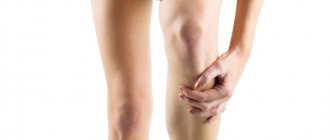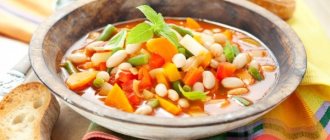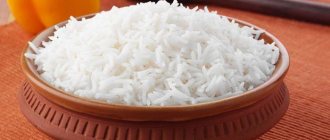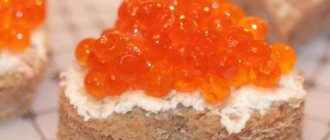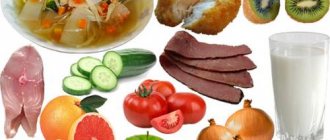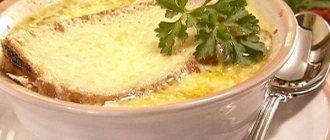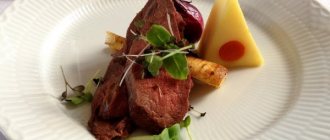Purpose of nutrition according to doshas
Ayurvedic teaching suggests that diseases begin with digestive disorders and it is better to prevent the development of pathologies at the beginning with the help of diet. Vata, kapha and pitta are in cyclical movement in the human body. At different times of the day, one of the doshas predominates over the other. Their balance determines the physical health of the human body. Doshas control metabolic processes:
- Pitta regulates the absorption and digestion of food.
- Kapha – promotes the creation of new and regeneration of damaged cells.
- Vata is responsible for the breakdown of molecules for the synthesis of substances necessary for the body.
Ayurvedic teaching divides food into 3 types:
- Activating Sattva (light, harmony) – light, sweet food that improves mood. It is worth eating before mental stress.
- Inducing Tamas (despondency, inertia) - warmed up yesterday's food, provoking apathy, laziness, slowdown of metabolic processes.
- Strengthening Rajas (energy, activity) - salty, spicy, sour foods that evoke a desire to act and determination.
Ayurveda believes that poor nutrition and failure to follow natural rhythms leads to illness. Following a diet according to body type helps cleanse the small and large intestines. This determines the health of soul and body. Diet recommendations for nutrition:
- Maintain 3-hour intervals between meals.
- Do not drink milk or water with meals.
- Eat only in a good mood, silently, chewing your food thoroughly.
- Eat only freshly prepared foods.
- Eat warm food.
- Eat only those foods that correspond to the structure of your body and coincide in rhythm with the season and weather.
Five elements: a reflection of the external world in each of us
Man is a miniature copy of nature. According to Ayurveda, all five elements are present in our body. We eat food obtained from the earth, our body returns to where it came from - to the earth. Water supports life and fills 70% of our body. Fire provides heat and energy and is involved in every metabolic and chemical process. Air circulates freely throughout the body, ensuring the performance of biological functions and enriching cells with oxygen. The ether is infinite - being invisible, it becomes the basis for the interaction of other elements.
At the quantum level, the five elements are a dynamic energy continuum emanating from a unified field. It gradually grows - from the subtle vibration of the ether to the deep vibration of the earth. Any matter is a combination of basic energies.
From the point of view of Ayurveda, water is something more than the substance that we are used to calling it. This can also include the physical qualities, biological functions and energetic properties of a given element. For example, water is liquid, heavy, soft and viscous. It governs all body fluids and is essential for natural chemical reactions. At the most subtle level of thought and emotion, water is associated with the calm dosha, which is responsible for the manifestation of feelings such as love, empathy and satisfaction.
The presence of the five elements also explains why the substances of the surrounding world can exist in harmony with the human body. We use plants, herbs, minerals and water because these substances are very similar in composition and properties to the elements of the human body.
Features of vata pitta dosha
Biological doshas determine the type of build of a person’s body and his mentality. Depending on what predominates - vata or pitta (air or fire), the body and soul of a person are formed:
- vata – restlessness, fussiness, anxiety;
- pitta – impulsiveness, anger, short temper.
There are mixed constitutions with a predominance of one of the energies - vata pitta, vata kapha, pitta vata dosha. People of the Vata Pitta type have a slender body, closer to athletic, above average height, a cheerful temperament, and original thinking. They often apply it in life, achieving some success.
Air and Fire people love to eat well, especially sweet dishes. But you shouldn’t get carried away with large portions - this can cause problems with food absorption and bowel movements. An imbalance between the doshas reveals the negative sides of people of this type - hot temper, inconstancy, aggression. The situation can be corrected by following a diet.
Slimming course. Ayurvedic Diet for Vata, Pitta, Kapha and Mixed Types
How to choose an effective diet for people with different constitutions? Your diet depends on the wind... According to Ayurveda and Tibetan medicine, the human body is based on the so-called three doshas - three substances of a subtle nature that ensure the normal functioning of all systems in balance. These are Vata (Wind), Pitta (Bile) and Kapha (Mucus).
VATA is the air element that is responsible for all movement in our body. Flows of energy (prana) move due to the action of Vata. Our breathing is the movement of air, the ability to walk, move; The movement of food through the gastrointestinal tract during digestion, the elimination of waste from the body, as well as nerve impulses are all under the control of Vata. And since Vata is a mobile element, it is the easiest to unbalance, which happens very often. It is the disruption of the functioning of Vata in the body that is often the primary cause of illness. If Vata is out of balance, we may also begin to consume more food than we need and therefore gain weight. Vata is associated with clarity of memory, sharpness of perception, but also painful attachment and fears. PITTA - corresponds to the element of Fire (to a lesser extent it is associated with Water) and is the main manager of all metabolic processes in the body. Thanks to Pitta, we can digest food, extract useful elements from it, and maintain body temperature. Pitta is also responsible for vision, feelings of hunger and thirst, and most importantly, for supplying the body with energy. When Pitta is disturbed, inflammatory processes, jaundice, ulcers, and high fever appear. In addition, when Pitta is imbalanced, for example when it increases in the body, a person may develop a very strong appetite, which often leads to overeating and excess weight. Pitta is associated with such personality traits and emotions as courage, pride, the desire to win, but also anger and hatred. KAPHA is an element responsible for stabilizing all systems, maintaining shape, maintaining the integrity of the body - in a word, it is a kind of energetic glue. Under its control are bones, muscles, joints, blood vessels and all body fluids. Thanks to Kapha, we can exist as an integral structure, the elements of which are interconnected. When Kapha is violated, cold illnesses are observed - colds, runny nose, dropsy. Obesity, swelling, and bone or skin overgrowth may also occur. Kapha is the most difficult dosha. It is difficult to unbalance it - but to bring it back into balance is very, very difficult! This takes longer than Vata or Pitta. Kapha is associated with patience, wisdom, peace, but also dullness, greed, and laziness. When the three doshas are in harmony, we are healthy and happy. However, they are called the main culprits of diseases. If one, two, or even all three doshas are out of balance, diseases arise, excess weight appears, and the psychological state worsens.
In accordance with the predominance of a particular dosha, several types of the human body can be distinguished.
For each of them there are special recommendations for diet, lifestyle, health and weight loss. If you follow them, a person with any type of constitution can maintain slimness, youthfulness, high tone and optimism. VATA PEOPLE ARE AIR TYPE Vata has an airy, light and cold nature.
People belonging to this type are usually short (and sometimes, on the contrary, very tall) and thin. They have dry skin, dry and brittle (often frizzy) hair, brittle, irregularly shaped nails, protruding, visible bones and joints, and underdeveloped muscles. The skin is often dark, swarthy, with dark moles. Vata people are very active, talkative, but they get tired quickly and their mood often changes. Often these people exhibit severe anxiety, fear, depression, and restlessness. The appetite of Vata people is variable - from very strong, when a person can eat three servings and not even notice it, to complete indifference to food, when a normal meal is replaced with a cup of tea or coffee. Due to their anxiety, they often abuse alcohol, smoking, and drugs. Some Vata people place too much importance on love and sexual relationships, put all their energy into them, and then suffer. DIET FOR WEIGHT NORMALIZATION As a rule, people of pure Vata type do not have problems with excess weight - on the contrary, they often need to gain weight. In any case, their food should be nutritious, the basis of the diet is well-cooked cereals, lovingly cooked vegetables, and meat. You should avoid raw vegetables, dry food (which is what Vata people especially love - they always keep a bag of chips, cereal, etc. at the ready), as well as bitter, spicy and astringent foods. You can drink dry red wine and mulled wine in small quantities; It is especially good to drink a glass of warmed wine before bed. If a Vata type person still gains excess weight, as a rule, this is due to the abuse of sweets. For example, under the influence of fear and anxiety, he is able to eat a large amount of chips, sweets, corn flakes, chocolate, and cakes. To lose weight, you must first achieve psychological balance, and then limit your consumption of sweets and starchy foods, replacing them with cereals, meat, and stewed vegetables. Cottage cheese, cheese, fruits (especially sweet ones - bananas, peaches, apricots) are also useful. Long-term fasting is not recommended for Vata, a maximum of one or two days - and then only if it does not cause discomfort and nervousness. It is also not recommended to go to bed on an empty stomach - if you feel hungry, drink a glass of hot milk (you can add ginger, nutmeg, melted butter, honey). And if this is not enough, you can eat some porridge or cooked vegetables. The main condition for health for the Vata type is nutritious food in small quantities and regularity of eating (you can eat a little every 2-3 hours, since too long breaks in food will lead to destabilization of Vata and overeating). It is very harmful for Vata people to snack on the go and generally eat in the bustle or at the computer, as this will only lead the situation out of control. Drinking for Vata is only suitable for hot or warm drinks. Cold drinks are undesirable as they activate the already cold nature of Vata. Strong tea or coffee should be avoided; it is best to avoid them completely. Ideal drinks are herbal or ginger tea, milk. LIFESTYLE The first rule for this type when weight fluctuations is to calm down and try to follow a daily routine, nutrition (eat at least 3-4 times a day), and get enough sleep. Under no circumstances should you stay awake at night (especially when spending time at work or in noisy companies); it is best to go to bed early and get up early. It is difficult for Vata to keep himself within limits, but this is necessary to normalize his well-being. You should avoid overload - both physical and emotional. It is not recommended to watch horror films, scenes of violence, or listen to loud dynamic music (especially before bed). Excessive mental stress (especially prolonged work at the computer or intense communication) can also be harmful. This type must dress warmly - even if the sun is shining, you should always have a warm sweater or scarf with you. Pouring cold water is not for Vata either - you can overcool the body and cause illness instead of healing. All water procedures should be warm and caressing. A dry sauna, a relaxing oil massage, and lying on a hot beach (preferably where there are fewer people to take a break from the hustle and bustle) are very helpful in stabilizing Vata. You should not overuse sex and violent entertainment. It’s good to live in dry and warm places with beautiful, peaceful nature. It is best to communicate with people of the Kapha type - they will help you with their wisdom, give you the necessary stability, a sense of the ground under your feet. You should not spend time with those who instill fear in you, criticize, judge, or simply nag. Communication with gossipers is especially harmful. PHYSICAL ACTIVITY Vata people benefit from all physical activities that harmonize energy without increasing anxiety and agitation. The best results will be brought by eastern systems - yoga, tai chi, qigong, wushu. Light exercise is also good - badminton, cycling, swimming (only in warm water!), short skating and skiing, dancing. It is very useful to walk while enjoying the beautiful views. Hiking will give excellent results (but only if you go at your own pace and rest on time, and do not try to catch up with the group). Overly emotional and fast sports where there is a lot of anxiety are contraindicated (for example, football, basketball, athletics). In any case, try not to overdo it with training; excessive stress is contraindicated for you. When doing yoga (and not only), it is important to maintain smooth movements and peace of mind and do exercises only until the moment they bring you pleasure, and in no case force yourself. Before performing yoga asanas, you must calm your breathing and mind. PITTA PEOPLE ARE FIRE TYPE Pitta has a hot, oily and pungent nature. People of this type are usually of medium or tall height, athletically built, they have developed muscles, reddish skin color, often with yellowish tint, hair with a red or yellowish tint, and often many reddish and light brown moles. Almost everyone has excellent posture, a proudly set head, strong, fairly wide bones. At the same time, these people are characterized by speed and dexterity of mind and movement; they are born athletes, conquerors, and politicians. The character of Pitta people is passionate, angry, harsh; the voice is loud. They love to argue, prove they are right, dominate, and suppress others. At best, they are creative, determined, witty people, and excellent organizers. They are also ambitious, they like to lead, they love and value money and know how to handle it. Their appetite is always excellent - these people love to eat, they have an excellent metabolism, excellent intestines. They are also prone to active physical activity - they love working in the fresh air, competitive and extreme sports - athletics, auto racing, mountaineering, diving, snowboarding, etc. DIET FOR WEIGHT NORMALIZATION Since Pitta people under any circumstances have a good appetite, the accumulation of excess their weight gain is usually associated with overeating. They can gain weight quickly, but also lose it quickly. The main problem of Pitta people is the strongest digestive fire (the ability to always perceive tasty and plentiful food) and impulsiveness. Fasting is not very beneficial for this type, as it will cause undesirable effects in the body and psyche. Excessive accumulation of bile will lead to both an imbalance in health and aggravation of negative emotions. Even one missed meal can negatively impact your mood and behavior. Pitta people should eat regularly, three times a day! It is best not to limit yourself in the amount of food, but to change its composition - avoid meat, fish, sweet, oily, fatty and spicy foods, giving preference to salads of fresh vegetables and herbs, low-fat dairy products, cereals in small quantities, not hot soups. Food should be cool, at room temperature; Bitter and astringent seasonings are recommended. All sour varieties should be excluded from fruits, giving preference to sweet ones. Fermented milk products can only be consumed in the first half of the day. Before eating, you should drink a few sips of water: this will help reduce your appetite, reduce digestive fire, and thereby partially protect you from overeating. If you want to fast, you need to do it for a short time, a maximum of two or three days, and be sure to drink a lot of clean, cool water during fasting. It is also useful for Pitta people to spend several days on a mono-diet, eating one type of food (for example, rice). Alcohol has a particularly strong effect on people of this type, causing appetite and igniting passion, so drinking alcohol, including beer, is contraindicated for them. Smoking is also very harmful to them. LIFESTYLE Pitta people need to invest their enormous energy in some good cause. These are excellent organizers who can handle any major undertaking. But at the same time, they should not turn into workaholics, which often happens to them. It is necessary to strictly observe the regime of alternating work and rest, get enough sleep and eat regularly. It is not recommended to watch action films, especially at night. You can dress quite lightly, and you shouldn’t overheat in the sun. In the heat, Pitta people suffer from dehydration, so they need to drink a lot. You can douse yourself with cold water, swim in an ice hole - Pitta people are not afraid of any frost. It is better to live in places with a temperate climate, not too hot and dry. Calming evening walks, especially near the water, are also useful. It is best to communicate with harmonious people who are not prone to arguments and strong emotions. You should avoid those who are in anger, hatred, envy, and manipulate others. PHYSICAL ACTIVITY For people of Pitta type, light gymnastic exercises, short running, and shaping are good. Swimming, which cools the hot Pitta nature, is highly recommended. Too much involvement in competitive sports should be avoided (if you play football or compete in speed, strength and agility, you need to remain emotionally detached, otherwise Pitta may get out of control). It is also not recommended to exhaust yourself with too much load during training. Team sports produce excellent results, especially where it is not so much speed and strength that is required, but coherence and mutual assistance. Pitta people can be excellent team leaders. Sailing is also very suitable for them. This type benefits from yoga as the final stage of any sports training. When practicing yoga, Pitta people can achieve harmony and balance in all body systems. They should perform the exercises as relaxed as possible, without thinking that they need to tense up as much as possible, put their legs behind their ears, or otherwise “defeat” themselves. If something doesn’t work out, then under no circumstances criticize yourself (this also applies to sports training). But praising yourself even for a small result achieved is a must; it will give a good incentive for new training. KAPHA PEOPLE ARE SOUND TYPE Kapha has a cold, wet, heavy nature. People of this type are the most portly - they have a large heavy body, strong bones, wide hips and joints; The ladies have a magnificent bust. The skin is pale, the eyes are large and clear. The muscles are developed, bones and joints do not protrude, as they are covered with a thick layer of muscle and fat. Kapha people usually have beautiful and strong teeth, thick hair, eyebrows, and plump lips. Their main element is the Earth, it gives them stability and constancy in everything. The second element, Water, provides moisture and coolness to the skin and a large amount of fluid in the body. The character of Kapha people is stable, solid, balanced, memory is strong; they love and know how to accumulate money and things. Kapha people rarely lose their temper; they tend to strive for harmony. They love to take care of others, especially feeding; They know how to eliminate any contradictions between people - they are born peacemakers. Kapha people learn anything very slowly, but once they have mastered the material, they will never forget it. They have slow, sluggish speech, but often have a very melodic, deep voice. Since they are very responsible in relation to money and property, they often achieve a high position in society - they become businessmen, politicians, and officials. Negative traits of this type are a tendency to hoard, excessive caution. Digestion of Kapha is slow. Sleep is sound, often excessive, which provokes laziness and lethargy. It is this type that usually struggles with excess weight for a long time and unsuccessfully (the excess is represented, as a rule, by water and fat, but their normal weight can also be higher than the average due to heavy and powerful bones and developed muscles). It is said about Kapha people that they are able to gain weight just by thinking about food. A typical Kapha representative can live on his “reserves” for a long time. Since Kapha is not prone to movement, these people prefer fasting and dieting to any physical activity. Kapha women often gain weight sharply after childbirth, and find it most difficult to lose it. The best thing, of course, is to accept yourself and your physique as it is, but this does not mean that you need to give up and get fat all the way. DIET FOR WEIGHT NORMALIZATION People of this type can and should fast for ten days or more, and spend fasting days. Kapha is unique: it can do without breakfast and dinner without harm to health. The fact is that she has a weak digestive fire, and therefore she does not want to eat so badly in the morning, unlike Vata and Pitta. In the morning of Kapha, you can just drink hot water, preferably with ginger and a spoon of honey, or water with lemon. Kapha people should eat twice a day, and only from 11-12 to 18 hours, when the fire of digestion is strong. Food taken at another time will bring nothing but harm. The most important thing is to limit your intake of salty and sour foods, as these foods cause thirst and lead to fluid retention in the body. We also advise you to avoid meat, fish, eggs, flour, sweets, and dairy. Stale foods that pollute the body are very dangerous. The diet should be based on steamed vegetables, legumes, buckwheat, sprouted grains, vegetable salads (except tomatoes and cucumbers). Food should be warm; Cold drinks and ice cream should be avoided. Of the sweets, only honey is allowed - for example, you can eat two teaspoons of honey in the morning with a glass of boiling water or ginger decoction. LIFESTYLE Kapha people are most often night owls - they like to stay awake at night and then lie in bed until noon. However, it is more beneficial for them to get up early, before 6 o'clock (before Kapha time comes - from 7 to 10, when it is more difficult for them to wake up). They also like to sleep after lunch, which is very undesirable, since this causes fat to be deposited in the body and fluid to be retained. After getting up, on an empty stomach, it is good to do some active exercises, then take an invigorating shower (but not too cool, so as not to aggravate the already cold nature of Kapha). Kaphas need to dress warmly - despite their fat layer, they often get cold. It is very useful to go to the sauna and warm up in the sun. It is better for Kapha people to live in warm and dry places: in regions with high humidity, problems may intensify. They also need to force their intellect to “move” and maintain mental activity. Positive emotions are required - without them, a person of the Kapha type can fall into persistent depression, and it will not be so easy to get him out of it. It is best to communicate with other types - Pitta people will bring the missing Fire, help you become more active, and Vata people will add liveliness and fun to communication. PHYSICAL ACTIVITY Kapha people need significant, long-term exercise - long-distance running, weightlifting, shaping, swimming. They need to overcome laziness and lead an active lifestyle. Kapha people often become good athletes due to their endurance. Training must be constant and subject to a strict schedule. This type needs to train, as they say, until they sweat, so that excess fluid finally begins to leave the body. Yoga, of course, is also useful for such people. But it should be remembered that static loads have little effect on weight fluctuations of the Kapha type and with the help of yoga alone they are unlikely to become slim. Of course, no matter how hard a Kapha person tries to lose weight, nature cannot be changed. They will never be able to become like the supermodels looking from the covers of glossy magazines. But even within the framework of such a complex and massive bodily constitution, harmony can be achieved by achieving a beautiful figure with pleasant rounded, but fit forms. Mixed types of cotton wool - Pitta is the happiest type in terms of weight. Most of the models belong to it, which today are considered the standard of beauty. Vata gives them liveliness of the character and speed of all processes in the body, and Pitt adds activity and courage. They are not as fragile as people of cotton wool, but not as muscular as representatives like Pitta. These slender and funny people have a wonderful metabolism, they can only be envied. In the summer they need to adhere to a diet for Pitta, and in winter - for cotton wool. People of this type practically do not suffer from overweight and only wonder how it can bother everyone else. If, nevertheless, the psyche of Vata - Pitta is upset, then it is not easy to help this type - at the same time a person begins to experience anger, fear, and uncertainty. The appearance of extra kilograms can be associated with the strengthening of these emotions, so the main condition for normalizing weight is to achieve psychological harmony. Any sports that bring joy and satisfaction are good: shaping, swimming, skates, skis, videos, yoga. Pitta - Vata this type is similar to the previous one, but it has a more developed muscles, Pitta’s influence is stronger. They are more persistent and decisive; Anger is often strong in them, but at the same time sometimes they can succumb to fear and anxiety. These people are very active, realize themselves in social life, profession, sports. They are enterprising, often successful in business, but for them the main thing is not money, but public achievements, prestige. They are not used to stopping: having reached one step, they immediately begin to storm the next. Their main lifestyle, diet and load should correspond to the type of Pitta, and in the fall and at the beginning of winter, you need to follow recommendations for cotton wool. These people have a wonderful metabolism, they can gain weight solely because of overeating. Recommended sports are the same as for Pitta, but with a greater degree of relaxing yogic exercises. Vata - Kapha is a rather problematic type in terms of weight, which combines the nervousness of cotton wool with a slow metabolism of the capha. These are people of small stature; Fragile bones in their physique can be combined with excess fat on the waist and hips. You can’t call them thin, but they do not produce the impression of fat people at all. Over the years, if they are fond of high -calorie products and lead a passive lifestyle, they become closer to the type of capha. And at the moment of stress, on the contrary, they can lose weight, and resemble typical people of cotton wool. In their character, they have both nervousness and rationality, constancy. It is not easy to lose the gained weight. They need to adhere to a wool diet in the fall and early winter, and in the second half of winter and in the spring to follow the capha regime, adjusting both doshas. They are contraindicated by any cooling procedures: for example, walrus, winter bathing is completely not for them. Of the sports classes, gymnastic exercises in the gym, games, skiing, and especially any kind of dances in which this type can get the joy of movement and aesthetic pleasure are most suitable for them. Kapha is a cotton wool, unlike the previous one, this type is much more reminiscent of capha, but it retains low growth and fragility of bones characteristic of cotton wool. These people can be complete and even completely round, but at the same time they have very elegant small arms and legs. Their psyche is more stable due to the predominance of Kapha, but in the coldest and most windy season they can experience anxiety and fear, to be depressed characteristic of cotton wool. Their character is cheerful, friendly, responsive. They have a very great need for love, but if it does not find a way out, it causes overeating and accumulation of fat. It is very difficult to lose weight to such people. The main recommendations for them correspond to the type of capha, but at the same time it is impossible to starve for a long time (a maximum of two or three days, depending on individual characteristics), and if they feel hunger before bedtime, then you need to eat a little or drink a glass of warm milk with honey, To reassure cotton wool. The best physical exertion for this type is eastern martial arts, aikido, rhythmic gymnastics. Pitta - Kapha are strong, healthy people who gain weight mainly when overeating and lack of physical activity. They have pronounced the qualities of Pitta, and there is also a heavier component of capha. They are active, impulsive, love to argue; Very operational. But if they spend time in inaction and sleep too much, then they develop the properties of capha - laziness, lethargy; The weight increases, all metabolic processes are inhibited. In summer, they need to adhere to a diet for Pitta, and in winter and early spring - for capha. It is undesirable to starve, and fasting days on vegetables, low -fat kefir and cottage cheese will help to reduce weight. Sports loads for this type are heavy athletics, martial arts. Kapha - Pitt in this type is the stability of capha. These are powerful people who have highly developed muscles, bones, joints, but smaller adipose tissue than pure representatives like capha. They are higher, massive, extremely hardy and strong physically. They have chubby cheeks, round ruddy faces. They have excellent digestion and do not suffer from the cold - Pitt gives them the necessary fire. People of this type need regular physical activity to fatigue and sweat, otherwise the passivity of Kapha will prevail, and they will gain excess weight. The difficulty is that it is difficult for them to force themselves to play sports regularly. Their main diet is the same as for the type of capha, and in late spring and summer, when it is hot, it is necessary to regulate Pitt using the recommendations that are relevant to it. Vata - Pitta - Kapha real princess. This is the rarest type that combines the signs of all three dosh. These people are the most harmonious and versatile, but it can be especially difficult for them to return to normal if the dosha imbalance occurs. Such people need to adhere to a diet for Pitta, in autumn and early winter - for cotton wool, and in the second half of winter and at the beginning of spring - follow the recommendations for the capha. If all three dosha got out of control, then first you need to calm the cotton wool, then normalize Pitt and only then move on to work with the cap. Source: Oracle
Nutrition for Vata Pitta
Ancient Indian teaching identifies 6 basic tastes:
- sour – eliminates toxins, improves the absorption of nutrients;
- spicy – stimulates metabolic processes, digestion of food;
- sweet – promotes tissue regeneration, normalization of the nervous system;
- bitter – removes toxins, provides ease in the stomach;
- tart or astringent – burns fat, absorbs excess moisture;
- salty – improves digestion and taste of food.
For mixed type doshas with a predominance of vata, the basis of the diet is sweet foods - dairy and fruits. You need to add tart and sour flavors. Salty, bitter and spicy foods should be excluded so as not to provoke an imbalance between the doshas.
The Vata pitta diet requires following the recommendations for eating times:
- Have breakfast between 6 and 10 am with porridge and fruit. This will ensure normal functioning of the digestive tract throughout the day.
- Have lunch between 1 and 2 p.m. with soups, stewed vegetables, rice, and cheese. The serving size is 60% of the daily value.
- Have dinner at sunset (5-7 p.m.). The food should be light (seaweed, baked apples, vegetables, kefir).
- Drink clean water at room temperature before and after meals, and before bed - warm milk with the addition of turmeric.
- Relax after eating, enjoying the taste sensations.
- Plan your diet so that the dish contains 2 or more recommended flavors.
Suitable Products
Products allowed for the diet by main categories:
- fruits – ripe: papaya, nectarine, avocado, grapes, lime, apricot, strawberry, mango, dates, prunes, melon, figs, peach, persimmon, raspberries;
- dairy products - fresh cottage cheese, milk, Adyghe cheese, ghee, yogurt;
- spices - anise, saffron, rosemary, coriander, cumin, vanilla, turmeric, curry, cardamom, bay leaf, cinnamon, verbena, peppermint;
- vegetables - after heat treatment (baked, boiled): pumpkin, artichoke, sweet tomatoes, zucchini, okra, Jerusalem artichoke, cauliflower, seaweed, lettuce;
- meat products - not recommended for consumption, like fish and eggs;
- cereals – sprouted wheat, barley, Basmati rice, oats, yeast-free bread;
- legumes – tofu, mung dal, bean sprouts;
- sweets – honey, maple syrup, chocolate;
- oils – soybean, olive, coconut, sunflower;
- nuts – pine, sunflower seeds, walnuts, coconut.
Restrictions
For harmony of body and spirit on a diet, you should refrain from:
- dairy products - cream, hard cheese, whey, sour cream;
- vegetables - fresh salads, legumes (peas, lentils), asparagus, celery, mushrooms, turnips, spinach;
- spices - marjoram, star anise, fenugreek, poppy seeds, dried garlic and ginger, thyme, sage, anise, oregano, cloves;
- fruits - plums, apples, cherries, bananas, gooseberries, oranges, watermelon, coconut pulp, kiwi;
- meat products - excluded on a vata pitta diet;
- nuts – Brazil nuts, pecans, pumpkin seeds;
- oils - sesame, corn, flaxseed, almond.
Unsuitable products
The following are excluded from the diet:
- fruits – pomegranate, grapefruit, cranberry, currant;
- dairy products – ice cream, sour milk;
- vegetables - sour tomatoes, eggplant, corn, sorrel, cabbage, radishes, chili, raw onions;
- meat products – all types of meat;
- spices – barberry, black and red pepper, salt, horseradish, mustard, fresh garlic;
- fats – margarine, mustard, rapeseed, peanut, safflower oils;
- other products - cashews, eggs, peanuts, vinegar, fish, meat, coffee, refined sugar, alcohol, ketchup.
Nutrition
Pitta has an excellent appetite, improving the digestion of food in Vata, but the absorption of food can be problematic, so you should not overeat. It is better to eat fresh food, possibly with light heat treatment.
When choosing vata pitta nutrition, you should focus on the predominant dosha, and then take into account the second.
Vata pitta diet should contain the following foods:
- fresh milk and whey, you should eat sour cream, yoghurt and butter;
- cereal sprouts;
- soy products, mung bean;
- nuts, with a few exceptions;
- ripe fruits with sweet pulp;
- oil, coconut, soybean, sunflower, ghee;
- baked vegetables;
- warm drinks with lemon juice and honey;
- mild spices;
- sweets.
And now the foods that are best avoided:
- sour milk, ice cream;
- avoid buckwheat, rye and oats, corn, millet;
- Legumes will not be beneficial;
- the body does not accept cashews well, avoid peanuts and almonds;
- sour green fruits, dried fruits, olives;
- all types of oil, except those permitted, and food fried in oil will also not be beneficial;
- cabbage and green salads, radishes, raw onions, tomato sauce;
- salt, fresh garlic, horseradish, mustard;
- meat, fish, eggs;
- alcohol;
- cocoa, coffee, tea.
The balance of the doshas directly depends on proper nutrition; if one of them begins to predominate, you immediately need to review your diet and correct it.
Ayurvedic remedies for good digestion will help balance the doshas.
Recipes for Vata Pitta Dosha
Semolina kheer
Ayurvedic diet dishes are prepared based on the dominant dosha. The recipe for vata dosha is semolina kheer. This is a delicious (according to reviews) dessert, which is eaten in small portions, washed down with aromatic tea.
Ingredients:
- milk – 1.5 l;
- semolina – 200 g;
- honey – 200 g;
- chopped walnuts – 200 g;
- ghee butter – 125 g;
- charoul nuts – 1 tbsp. l;
- vanilla – 0.5 tbsp.
Cooking method:
- Melt the ghee in a heavy saucepan.
- Put semolina.
- Fry the mixture until caramelized, stirring constantly.
- Pour milk in a thin stream.
- Bring the mixture to a boil, being careful not to form lumps.
- Add honey, vanilla and nuts.
- Leave the dish on low heat for 3-5 minutes.
Spicy lassi
The fermented milk drink lassi is called an Ayurvedic probiotic. It normalizes digestion, so it is best to drink it after a hearty lunch. Spicy lassi recipe for diet:
Ingredients:
- water – 200 ml;
- yogurt – 80 ml;
- maple syrup – 2 tsp;
- nutmeg, vanilla - to taste;
- anise – 2 stars.
Cooking method:
- Grind the spices in a blender.
- Add water and room temperature yogurt.
- Beat the mixture for 1 minute.
- Add maple syrup.
- Drink 20 minutes after meals.
Lavender tea
Recipes for pitta dosha are combined with vata dosha dishes. You can prepare healthy and tasty lavender tea for a sweet dessert:
Ingredients:
- water – 700 ml;
- fennel seeds – ½ tsp;
- dried lavender – ½ tsp.
Cooking method:
- Heat a dry frying pan over low heat.
- Sprinkle fennel over it.
- Fry the seeds until golden brown.
- Pour boiling water over dried lavender leaves.
- Add toasted fennel.
- Infuse the tea for 7-10 minutes.
- Drink warm.
Fish caviar
The easy-to-prepare dish “Fish Caviar” helps cleanse the body of toxins. The finished mixture is used on a diet for sandwiches:
Ingredients:
- dry seaweed – 300 g;
- sweet tomatoes – 3 pcs.;
- water – 1.5-2 tbsp.;
- onions – 2 pcs.;
- linseed oil – 2 tbsp. l.;
- cumin, saffron, ginger, cloves - to taste.
Cooking method:
- Rinse the cabbage and steam with water for 10 minutes.
- Chop the onion and simmer it in oil in a frying pan until golden brown.
- Drain the cabbage and add it to the onion.
- Simmer the dish for 15 minutes.
- Grind the tomatoes with a blender and place in a frying pan.
- Add spices.
- Cook the caviar for another 5 minutes.
- Eat the dish warm, with cereal tortillas.
Ayurveda
Find out your doshaBody type traits - doshas
To better understand your Ayurvedic constitution and to double-check your test results, below is a list of the main physical and psychological characteristics of people with one predominant dosha
in their constitution.
VATA (“WIND”)
Creativity · Enthusiasm · Freedom · Generosity · Joy · Liveliness
For people with a predominant vata dosha
, or, in other words, having a
Vata
in the direction of its increased agitation, are often characterized by poor nutrition, constipation, insomnia, impotence, absent or irregular periods, reduced muscle mass, headaches, neuroses, dry skin, rheumatism, arthritis, flatulence (congestion gases in the stomach and intestines), cramps and colic, premature aging, as well as a large number of other symptoms and disorders.
People with predominant Vata dosha
need to strictly follow the following diet.
If there are only isolated vata
, but the constitution (
dosha
) itself is different, then it is necessary to follow the diet below only until these disorders disappear.
Physically, such people are either very tall or very short, not muscular, with thin and lean limbs; They have a fast gait, characterized by short, quick steps. The skin is generally thin, darkish and cool. The hair is thin, dark, coarse, being either curly or curly. The face is usually long and angular, often with an underdeveloped chin. The neck is thin and skinny. The nose is small and narrow, and can be long, hump-shaped, or asymmetrical. The eyes tend to be small, narrow or sunken, dark brown or gray, with a dull shine. In people with a predominant vata dosha
a small mouth with thin, narrow or tightly compressed lips. Teeth are irregular, protruding or broken, protruding significantly from the gums. The voice is weak, low or broken, although speech is fast and intermittent.
In people with vata
restless mind and weak memory.
They avoid confrontation. They have an active and sensitive nature and express themselves through athletic and creative pursuits. Usually being artistic and creative with a good imagination, they sometimes indulge excessively in pleasure. Of all the doshas
, they are the most sexually active.
Fearful, suspicious and restless, they ask a lot of questions, theorize and overanalyze. Often dissatisfied with friendship, they are unable to maintain it. People with a predominant vata dosha
spend money quickly, often on trifles. They sleep 5-7 hours a day and their sleep is light and intermittent.
Diet
Eat warm, well-cooked sweet, sour and salty foods at least three times a day. Avoid hot, bitter and spicy foods. Because of their hypersensitivity, these people often suffer from food allergies even when consuming foods that would normally be acceptable to them, including under normal circumstances. Instead of ignoring such dishes for people with vata dosha
It is better to use Ayurvedic remedies.
Basically, fasting does not bring any good to them as it increases the elements (ether and air) of vata
.
Under certain circumstances, fasting for one or two days with grape juice and water may be beneficial. It is recommended to fast for 12 to 24 hours twice a month. People with vata dosha
need plenty of water and benefit from milk, fruit juices and warm licorice-sweetened herbal teas, which have a calming effect.
Drinking a small amount of red wine before or with meals may be beneficial. Try to never eat alone, while watching television, or when you are excited or nervous. For more information on choosing a diet, see “Planning a Diet – Choosing Foods”
.
Massage oil
Soothing and warming, such as Mahanarayana.
Exercises
Moderate intensity exercise such as yoga, walking and light weight lifting.
Recommended Herbs and Supplements
Ashwagandha, shatavari, haritaki, guggul, trikatu, Vata tea, Calming tea.
- Vata-increasing factors (which should be avoided by people with vata dosha):
- Staying in the cold, lack of routine in life, too much dry, frozen or delayed food; food with a bitter, pungent or astringent taste.
- Fasting, too much travel, too much or inappropriate exercise, suppression of natural needs, surgical operations in the abdominal region.
- Do not rub your skin with oil.
Group "Meditation" on Facebook
| PITTA (“BILE”) |
Ambition · Focus · Trust · Courage · Pursuit of knowledge · Happiness · Reasonableness
For people with a predominant pitta dosha
,
or, in other words, having a pitta
in the direction of its increased agitation, are characterized by most infectious diseases, inflammation, skin diseases, liver diseases, increased stomach acidity, diarrhea, high blood pressure, ulcers and other disorders.
People with pitta dosha
have a very good digestive system that easily absorbs a wide variety of foods and is good at digesting food combinations with low nutritional value or unhealthy foods.
However, the resulting toxins wander through the bloodstream, causing eczema, abscesses, acne and other diseases caused by skin pollution. People with a predominant pitta dosha
need to strictly follow the following diet.
If there are only individual pitta
, but the constitution (
dosha
) itself is different, then it is necessary to follow the diet below only until these disorders disappear.
In people with pitta
moderately developed physique with muscular limbs and a purposeful, stable gait of medium speed.
They have a loud, strong voice and precise, persuasive speech. Their skin is bright, soft, shiny, warm and tends to burn easily in the sun; She tends to be covered with freckles, she has a lot of moles, and she is prone to breakouts. Their body is hot and sweaty. People with a pitta
are characterized by beautiful and soft hair of a light or reddish color, which tends to quickly grey.
The face is shaped like a heart, often with a pointed chin. Their neck is proportional and of medium size. A smooth, pointed, medium-sized nose corresponds to medium-sized eyes, which are either light blue, light gray, or brown, with an intense shine; they turn red in summer or after swimming. In people with a predominant pitta
dosha , both the mouth and lips are of medium size; They also have medium-sized yellowish teeth.
People with pitta dosha
characterized by intelligence and thoroughness, which stems from their highly aware and focused mind. Harsh in anger, they are irritable, jealous and aggressive by nature. Insightful and thoughtful, they stand out for their ability to express themselves well, their education and pride. Having a developed sense of responsibility, they can make good decisions and organize activities correctly. They love to argue, but have a sense of humor. Their selectively excellent memory makes them good students, quickly learning new things. Moderately passionate about sex. They spend money sparingly, usually on luxury items.
Diet
Warm or cool foods with a sweet, bitter or astringent taste are recommended rather than foods that are boiled or steamy and increase the elements (fire and water) of pitta.
.
Avoid eating spicy, salty and sour foods. The diet should have a cooling effect. It is necessary to avoid in every possible way fried and very spicy foods, as well as very late dinners. Raw fruits and vegetables are very healthy. One should not fast as it increases the pitta
;
Fasting is possible twice a month with the consumption of apple, grape and pomegranate juice. Such people need a lot of fluids. Pure water (without carbon dioxide, i.e. non-carbonated), sarsaparilla extract, fruit juices, teas and milk are beneficial. Strong alcoholic drinks and coffee are not recommended. Cool and sweetened bitter herbal teas are very good for such people as they remove toxins from the liver, a vulnerable organ in people with pitta dosha
.
Beer and red wine can be consumed, but only along with food and in small quantities. Due to their good digestion, such people can easily tolerate the loss of some vitamins and minerals, but they need to be replenished with calcium and iron. By nature, such people are very emotional, so when eating, the atmosphere should be calm. Family and work matters should not be discussed at this time. For more information on choosing a diet, see “Planning a Diet – Choosing Foods”
.
Massage oil
Cooling, such as Chandanbala Lakshadi.
Exercises
Moderate intensity exercise such as jogging, swimming, yoga, cycling and weight lifting.
Recommended Herbs and Supplements
Haritaki, bhumiamla, Chyawanprash, surakta, sitopladi churan, Pitta tea.
- Pitta-increasing factors (which should be avoided by people with pitta dosha):
- Exposure to heat, too much red meat, salt, spicy or sour foods. Stomach upset and irregular eating. Doing exercises at noon. Medicines, especially antibiotics.
- Too much intellectual activity and thinking. Alcohol, fatigue. Anger, hatred, fear, emotions.
Group "Meditation" on Facebook
| KAPHA (“MUcus”, “SPECT”) |
Caring · Centered · Compassion · Contentment · Faith · Fulfillment · Groundedness · Tolerance · Feeling cared for · Stability · Support · Tenderness
For people with predominant kapha dosha
, or, in other words, having a disorder
of kapha
in the direction of its increased agitation, are characterized by obesity, high cholesterol, dropsy, diseases of the respiratory system and sinuses, diabetes, gallstones and kidney stones, low blood pressure and other disorders.
Accumulation of mucus in the body is always a sign of too much consumption of such foods, which increase the elements of kapha
.
People with predominant kapha dosha
need to strictly follow the following diet.
If there are only individual kapha
, but the constitution (
dosha
) itself is different, then it is necessary to follow the diet below only until these disorders disappear.
a kapha temperament are large, plump, with a well-developed physique and large, long limbs.
have a pleasant, deep and sonorous low voice with slow and rhythmic speech. Their skin is usually thick, shiny, pale or white and cool. They have thick, thick, wavy, shiny and usually brown hair and a large, round and full face. The neck is solid, powerful, similar to the base of a tree trunk expanding at the bottom. They have a large, round nose and large, attractive, blue or light brown eyes. They are characterized by a large mouth with large and full lips. Their teeth are also large, white in color, with good dense gums.
People with predominant kapha dosha
are calm, stable, attentive, serious and patient individuals.
It is difficult to anger them, but if this does happen, then it is not easy for them to calm down. They are noble, true to their words and avoid lying. Loyal, forgiving and understanding, they can be apathetic and even lazy if not controlled by others. Learning may be slow, but memory will be good. They excel at logical analysis, but take time to reach conclusions. Long and deep sleep and energetic and prolonged sex are natural for them. If they manage to save money, they spend it on food. They may exhibit an element of dullness from time to time, due to the fact that the minds of people with a kapha
are usually too satisfied to seek fresh mental stimulation.
Diet
Reduce the amount of warm food. Avoid foods with sweet, sour and salty tastes, which increase the elements (water and earth) of kapha
.
Eat foods that have a pungent, bitter and astringent taste. The main meal should be taken between ten o'clock in the morning and half past twelve. Breakfast may be excluded, and dinner should be taken before sunset. If possible, it is better not to eat anything between meals. Under no circumstances should you nap after eating. Healthy people with kapha dosha
should fast one day a week.
Due to their constitution, they need very little fluid and are advised to drink as little as possible. Drinking cold and soft drinks should be avoided at all costs, as such people may develop a runny nose or cold even after drinking just one glass of cold lemonade. Herbal teas with honey are highly recommended. Coffee and tea in moderate quantities are not harmful. Beer, red wine and strong alcoholic drinks are not recommended; white wine is allowed only in small quantities and with food. Milk must be diluted by half with water and consumed warm. In addition, people with kapha dosha
should be careful not to alleviate their emotional problems by increasing the amount of food they consume.
For more information on choosing a diet, see “Planning a Diet – Choosing Foods”
.
Massage oil
Stimulating and exciting, such as Punarnavadi and Shrigopal.
Exercises
Regular and energetic.
Recommended Herbs and Supplements
Guggul, sitopladi churan, trikatu, Chyawanprash, Kapha tea.
- Factors that increase kapha (which should be avoided by people with kapha dosha):
- Exposure to the cold, too much sugary foods, meat, fat, cheese, milk, ice cream, yogurt, fried foods, excessive use of salt. Excessive water consumption, short sleep after meals.
- Loitering. Sedatives and tranquilizers. Doubt, greed and possessiveness.
Group "Meditation" on Facebook
| VATA-PITTA |
The traits of such people reflect the combination of vata doshas
and
pittas
.
For example, they often have wavy hair, caused by a combination of vata
and
pitta
. Basically they have poor circulation. They love to eat, but have trouble digesting large amounts of food.
Healthily Balanced Vata Pitta
the person has the ability for original thinking - a characteristic of
vata
, as well as an expert in applying the received theory in practice - a characteristic of
pitta
.
Lightness (speed and efficiency) and intensity (zealousness) are the common qualities of vata
and
pitta
.
The proper use of this intensity is to harness your agility for the purpose of intense self-development. When a person's Vata
and
Pitta
are combined in the wrong way, alternating fear and anger appear as a response to stress.
Read more about vata-pitta
can be learned from the description of
the doshas vata
and
pitta
.
| PITTA-KAPHA |
Of all constitutions, people with pitta-kapha
, seem to be best adapted to the confusion, inconsistency and constant change that characterize the current world because they combine the stability
of kapha
and the adaptability
of pitta
.
Many people who have achieved all-round success in life have a pitta-kapha
.
Pitta's
active metabolism
kapha
physique , promoting good health, and
pitta's
is well tempered by
kapha's
, promoting good mental balance.
The ease with which they achieve success in the world develops the arrogance and self-confidence of pittas
and the prim self-righteousness
of kapha
, which can completely isolate the individual from all reality.
Foods with a bitter and astringent taste suit them best.
Read more about pitta-kapha
can be learned from the description of
the pitta
and
kapha doshas
.
| KAPHA-VATA |
People with vata-kapha dosha
tend to be tall, but with an average build and most other physical attributes, being similar to people with pitta
dosha
.
Vata
and
kapha
are united by their coldness.
However, they still do not suffer as much from physical cold as pure vata
due to the strength and protection
of kapha
. They have a double emotional need for warmth.
The inherent lack of heat usually manifests itself physically as disorders of the digestive tract, especially constipation; Respiratory diseases with large mucus production are also common for them. They may be afraid to make decisions without proper research beforehand.
They should eat sour, salty and spicy foods.
Read more about the traits of the Kapha-vata
can be learned from the description of
the doshas kapha
and
vata
.
| SAMA-DOSHA |
From a physiological, emotional and psychological point of view, such a person represents an ideal type. All three bioenergies are well balanced in it. This biotype suffers significantly less from emotional ups and downs, and is also well protected from diseases. If he does get sick sometimes, it is usually due to bad food or external influences (climate, season, etc.). Well-balanced people notice even the smallest details. They follow a very well thought out daily routine because they believe that success never comes easy.
They are considered important exemplary individuals and often hold very important positions in society. Unfortunately, such people are extremely rare.
In addition, there is always a possibility of scoring the same number of points as a result of testing only in any two doshas
.
Such people have the qualities of both of these doshas
, being “balanced” only within two
doshas
.
Group "Meditation" on Facebook
Recommendations and advice provided on this site are intended for informational reading only. Consult your nutritionist and/or physician before using them.
Introduction | Determine your body type | Body Type Traits Dosha Imbalances | Subtypes of doshas Accelerated self-study of meditation


